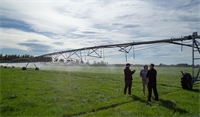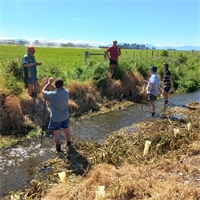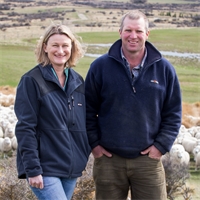05Mar
Catch cropping to reduce nitrate leaching
Words and images supplied by Agricom.
The risk of nitrogen (N) leaching from urine patches, deposited while stock are grazing winter crops, is considerable. Soils that are left fallow, post-winter grazing, create a high probability of soil drainage and nutrient losses, which in turn may affect spring and annual production. Catch crops are used to cover the fallow ground and take up the urinary N deposited during winter grazing, reducing the risk of nitrate leaching. The use of catch cropping is a valuable tool to aid farmers to meet new requirements with environmental rules that are currently being implemented throughout the country.
Recent research from Forages for Reduced Nitrate Leaching (FRNL) and Pastoral 21 (P21) have shown dry matter (DM) production can be significantly increased at a lower cost per kg/DM while decreasing the amount of leachable N. One study has shown that by sowing catch crops such as oats following winter crop grazing, nitrogen losses have been reduced by up to 49% compared to leaving the ground fallow. (The magnitude of this effect may vary depending on crop management, the choosen catch crops perfromance, soil type and seasonal weather conditions).
Milton forage oats and Coronet forage oats have been bred for increased yield, quality and disease tolerance as well as having a fast establishment in cool conditions. Milton oats are faster to mature than Coronet oats, making them an ideal option for catch crop sowing in late winter or early spring for green chop cereal silage or quality spring grazing before returning to another crop option.
Triticale is also a good option for catch cropping, particularly for frost prone areas as it is a more frost tolerant cultivar than oats. Kudos triticale has a high yield potential making it an ideal cultivar for whole crop cereal silage. Kudos whole crop cereal silage has similar properties to maize silage, with high carbohydrates, but with the advantage of being able to germinate and grow through the winter into the spring, to be harvested in early summer.
Although Italian and annual ryegrasses are fast to establish with a high winter and early spring DM yield (typically being ready for a first grazing 4 to 6 weeks after sowing) they are not as fast or as reliable as cereals for sowing in winter and are more suited to a sowing date of either late April/May or very late August/early Septmber for catch cropping. Asset diploid Italian ryegrass is a dense cultivar that was bred from the most winter-active plants. It has a high tiller density to encourage persistence, helpful for heavy winter grazing and can then be shut up for silage production. Asset also has the added protection of AR37 endophyte. Jivet tetraploid annual ryegrass has a speedy establishment phase and produces high-quality silage. It has a large upright leaf for ease of mowing and has been selected due to its exceptional rust tolerance.
These crops can also be useful in providing ground cover for weed control and soil stabilisation and increase total annual production. Figure 1 below demonstrates another trial where the effect of using a catch crop to reduce N was compared to leaving the ground fallow, providing a 33% reduction of soil mineral N.

Oats are an ideal species to use for catch cropping, as they establish well in cooler soil temperatures and even when plants are very small they have the ability to absorb residual soil N. Figures 2 and 3 demonstrate the benefits gained by putting Italian ryegrass, triticale and oats into a system following a fodder beet crop and a kale crop being grazed. Oats were proven to have the greatest effect as a catch crop in terms of dry matter harvested (t DM/ha) and N uptake (kg N/ha).
Talk to your local Environmental Specialist at your Regional Council if you would like further information on current environmental guidelines within your specific catchment. Contact your local Ruralco Representative for more information on the ideal catch cropping cultivar for your farming system.
Related

As Canterbury irrigators settle in for one of the longest irrigation seasons ever, prospects for ele...
Read More

Celebrations for this year’s 25th anniversary Ruralco Instore Days are set to continue well into Ju...
Read More

Placing catchment communities in the Ashburton District at the centre of decisions and direction on ...
Read More

For the next three months we will look at the following: fodder crops, pre-emergence sprays on autum...
Read More

While New Zealand’s burgeoning tourist market presents opportunities for Mackenzie basin farmers to...
Read More

With primary industries crying out for more skilled young people, the Growing Future Farmers program...
Read More